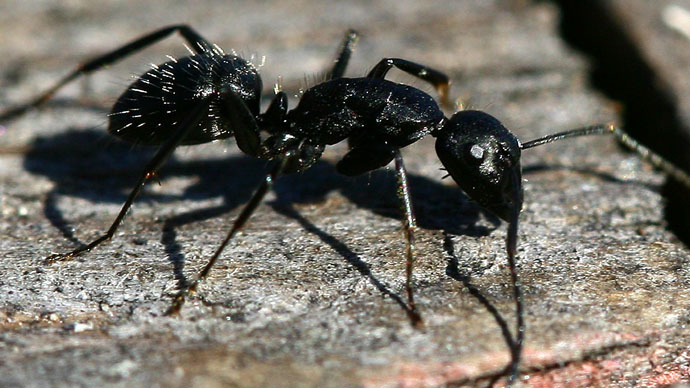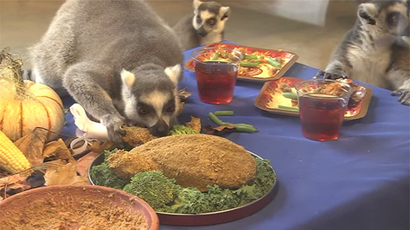NYC litterbugs: Manhattan ants are hot dog fans, new report says

Ants are capable of eating the equivalent of 60,000 hot dogs a year just on one stretch of Broadway. Scientists say these tiny insects are helping clean up New York City, competing for food with rats.
A new study from North Carolina State University shows that ants
and other arthropods play an important role in disposing of
garbage on the streets of Manhattan.
"We calculate that the arthropods on medians down the
Broadway/West St. corridor alone could consume more than 2,100
pounds of discarded junk food, the equivalent of 60,000 hot dogs,
every year - assuming they take a break in the winter," Dr.
Elsa Youngsteadt, a research associate at NC State and lead
author of a paper on the work, said.
"This isn't just a silly fact," Youngsteadt noted.
"This highlights a very real service that these arthropods
provide. They effectively dispose of our trash for us."
READ MORE: Cockroaches to the rescue: 'Cyborg'
insects can help save people trapped in earthquakes
Meanwhile, ants are no strangers in New York. A recent study
found 42 different species in the city, with median strips alone
accounting for 18 different species.
The research team from North Carolina State University sampled
arthropods, such as insects and millipedes, in median strips and
parks in Manhattan to measure the biodiversity of those sites. To
find out how much the arthropods ate, the researchers placed
carefully-measured amounts of junk food - potato chips, cookies
and hot dogs - at sites in medians and parks. One set of food was
placed in a cage, so only arthropods could reach it; the second
set was in the open, where other animals could also eat it. After
24 hours, the scientists collected the food to see how much was
consumed.
By comparing consumption inside and outside of the sample cages,
the researchers concluded that other animals, such as rats and
pigeons, were also snacking on junk food.
"This means that ants and rats are competing to eat human
garbage, and whatever the ants eat isn't available for the
rats," Youngsteadt explains. "The ants aren't just
helping to clean up our cities, but to limit populations of rats
and other pests."
The researchers were conducting a long-term study of urban
insects when Hurricane Sandy hit NYC in 2012. In spring 2013,
they expanded their study to see whether the disaster had
affected the behavior of insect populations. The researchers
found that Hurricane Sandy had no serious impact on food
consumption by arthropod populations in New York, which came as a
surprise, given that many of the study sites had been flooded
with brackish water.













